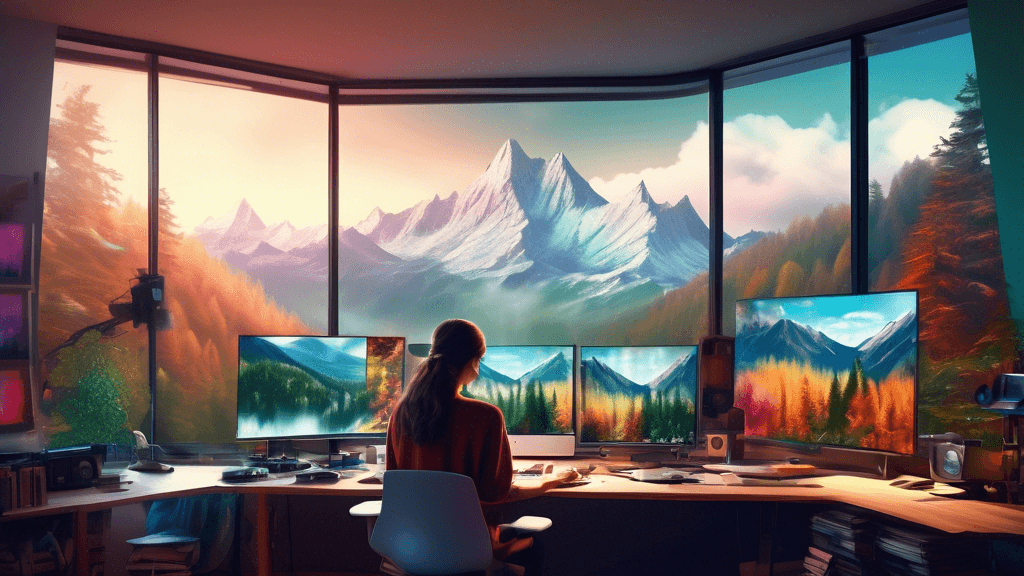
Perfecting Scenery: Essential Editing Techniques in Landscape Photography
Share
Mastering the Art of Landscape Photography: Essential Editing Techniques
Landscape photography transcends simple snapshots of nature; it's an art form that requires a keen eye for detail and a solid grasp of photographic techniques. However, capturing the image is only half the battle—the magic often lies in the editing process. In this blog, we dive deep into the essential editing techniques that can transform your landscape photos from good to breathtaking.
Understanding the Basics: Why Edit Landscape Photos?
Before delving into specific techniques, it's crucial to understand why editing is a fundamental step in landscape photography. Editing allows photographers to enhance the mood, correct environmental imperfections, and align the captured image with the vision they had in mind when they pressed the shutter button. But, what are some of the most effective editing techniques that can help you achieve these goals?
Technique 1: HDR for Dynamic Range Optimization
High Dynamic Range (HDR) photography is an excellent technique for landscapes, where light conditions can vary dramatically across the scene. HDR involves combining multiple exposures of the same scene to create a single image with a broader range of tonal details. Here are a few pointers:
- Shoot in RAW to ensure you capture as much detail as possible.
- Use a tripod to ensure each exposure is aligned perfectly.
- Edit using software that supports HDR processing like Adobe Lightroom or Photomatix.
Notable landscape photographer Ansel Adams once said, You don’t take a photograph, you make it. HDR is a powerful tool in making your photographs, particularly when dealing with challenging light.
Technique 2: Color Correction and Enhancement
Colors play a vital role in conveying the emotion of a landscape photo. Adjusting saturation, vibrance, and color balance can help in making your photos pop and reflect the true beauty of the scene. However, a common mistake is over-saturation; colors should look natural and believable. When editing, try the following:
- Adjust the white balance to enhance the photo’s warmth or coolness.
- Use selective color adjustments to fine-tune specific areas of the image.
Technique 3: Sharpening and Clarity
Clarity and sharpness are crucial in landscape photography, as they affect the texture and detail of natural elements like foliage, rocks, and water. Adobe Photoshop and Lightroom offer tools like the 'Clarity' and 'Sharpen' sliders to enhance texture and edge definition. However, it is important to avoid over-sharpening, which can lead to unnatural edges and noise.
Technique 4: Using Graduated Filters and Adjustment Brushes
Graduated filters are perfect for landscapes where the sky is much brighter than the foreground. These filters allow you to selectively adjust exposure and color balance, which can help in recovering details and colors in the sky without underexposing the land. Adjustment brushes are handy for making local adjustments without affecting the whole image.
Technique 5: Composition and Cropping
Sometimes, the most powerful edit is to change the composition post-capture. Cropping can dramatically alter the focus and impact of a landscape photo, guiding the viewer’s eye more effectively. Consider the rule of thirds and aim to position horizon lines and key features along these lines or at their intersections.
Final Thoughts: The Ethical Side of Editing
While the power of editing is undeniable, it's essential to use it responsibly. The goal of landscape photography should be to represent the natural environment authentically and ethically. Over-editing can not only detract from the natural beauty but also mislead viewers about the reality of these environments.
Landscape photography, combined with thoughtful editing, not only preserves our planet's natural wonders but also raises awareness about their significance and fragility. By mastering these editing techniques, you can ensure your photography does justice to nature's true masterpiece.
Are you ready to take your landscape photography to the next level? Why not practice these techniques next time you’re out in nature and see how they can transform your work. Remember, each shot is not just a picture, but a message about the awe-inspiring world we live in.





